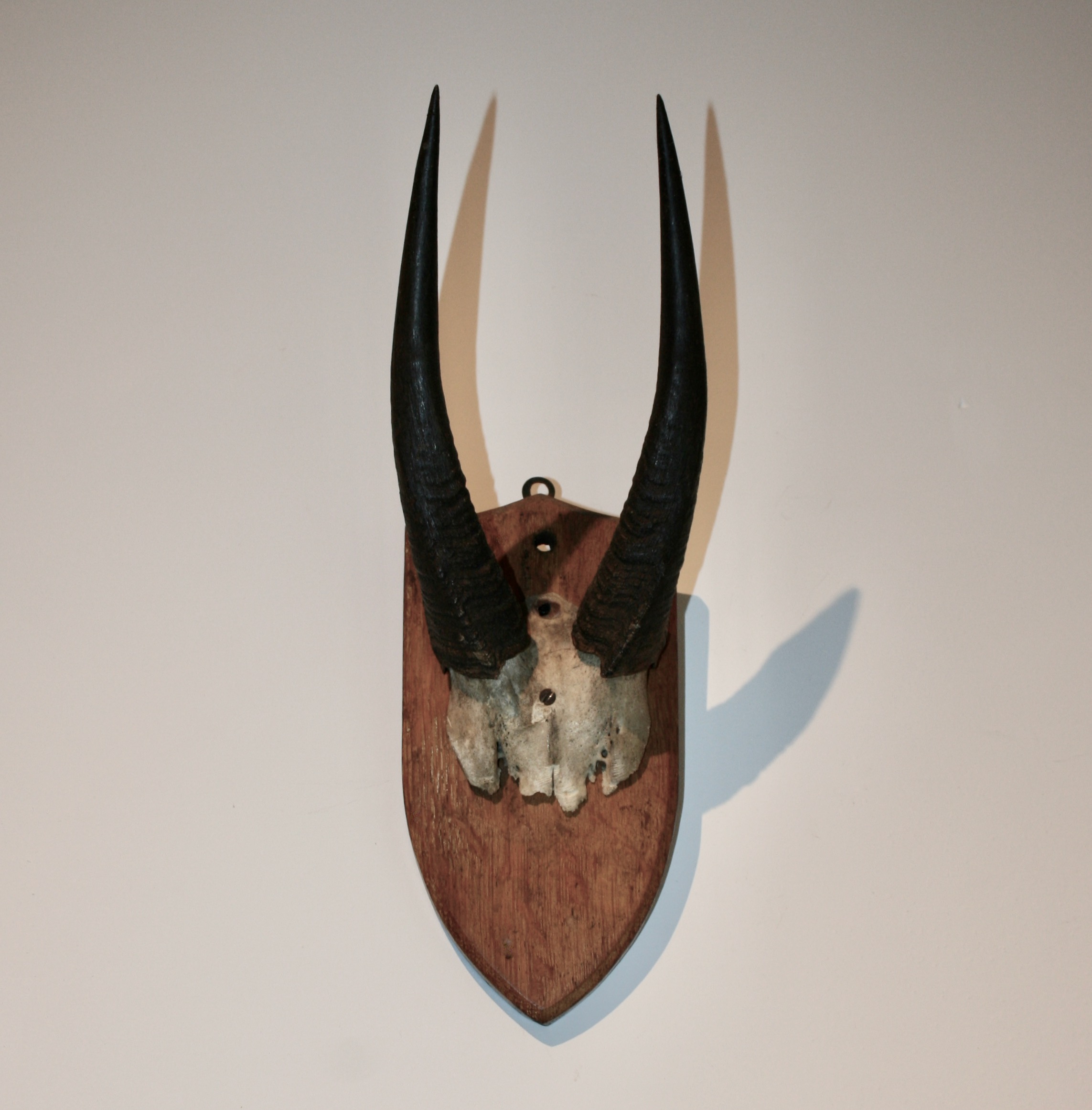

Title: Antique Mounted Antelope Horns
Shipping: $29.00
Artist: N/A
Period: N/A
History: N/A
Origin: Central Africa > Gambia
Condition: Good
Item Date: N/A
Item ID: 198
🔥 Consignment. Availability must be confirmed, and all legal requirements must be met. 🔥 Note: If any material is found to be questionable after a thorough examination and a determination that it might violate existing legal regulations, it is important to emphasize that Busacca Gallery would be prohibited from selling or distributing such material in compliance with current laws. Antique Mounted Horns and Bone / A horn is a permanent pointed projection on the head of various animals that consists of a covering of keratin and other proteins surrounding a core of live bone. Horns are distinct from antlers, which are not permanent. In mammals, true horns are found mainly among the ruminant artiodactyls,[not verified in body] in the families Antilocapridae (pronghorn) and Bovidae (cattle, goats, antelope etc.). One pair of horns is usual; however, two or more pairs occur in a few wild species and in some domesticated breeds of sheep. Polycerate (multi-horned) sheep breeds include the Hebridean, Icelandic, Jacob, Manx Loaghtan, and the Navajo-Churro.
Animals have a variety of uses for horns and antlers, including defending themselves from predators and fighting members of their own species (horn fighting) for territory, dominance or mating priority. Horns are usually present only in males but in some species, females too may possess horns. It has been theorized by researchers that taller species living in the open are more visible from longer distances and more likely to benefit from horns to defend themselves against predators. Female bovids that are not hidden from predators due to their large size or open savannahlike habitat are more likely to bear horns than small or camouflaged species.
Link: https://en.wikipedia.org/wiki/Horn_(anatomy)
Horns usually have a curved or spiral shape, often with ridges or fluting. In many species, only males have horns. Horns start to grow soon after birth and continue to grow throughout the life of the animal (except in pronghorns, which shed the outer layer annually, but retain the bony core). Partial or deformed horns in livestock are called scurs. Similar growths on other parts of the body are not usually called horns, but spurs, claws, or hooves, depending on the part of the body on which they occur.